
Tingena armigerella is a species of moth in the family Oecophoridae. T. armigerella is endemic to New Zealand where it is found in the North Island. The larvae of this species feed on plant litter. It is parasitised by the parasitic wasp Fustiserphus intrudens.

Izatha copiosella is a moth of the family Oecophoridae. It is endemic to New Zealand, where it is found on the south-eastern parts of the North Island and throughout the South Island except the West Coast. Larvae are found in dead wood and are likely to use kōwhai species as hosts. The adults are night fliers and are attracted to light. They are on the wing in January and February.

Heterocrossa adreptella is a moth of the Carposinidae family. This species was long considered the New Zealand raspberry budmoth however this was a taxonomic misinterpretation of the type material used to describe this species. This error was corrected in 1988 with the New Zealand raspberry budmoth giving its own species name Heterocrossa rubophaga. H. adreptella is endemic to New Zealand and has been collected in the Wellington Botanic Garden and been observed resting on mānuka branches.

Pasiphila bilineolata is a moth in the family Geometridae. It is endemic to New Zealand and can be found in the North and South Islands. The species inhabits native forest and shrubland and the larvae feed on Hebe species. Adults are on the wing commonly from August to January but have been observed most months of the year and are attracted to light.

Tingena loxotis is a species of moth in the family Oecophoridae. This species is endemic to New Zealand and is found in the North Island. This species is found in gardens and are known to enter houses. Adults are on the wing in December and January. It is classified as "Data Deficient" by the Department of Conservation.

Tingena aphrontis is a species of moth in the family Oecophoridae. It is endemic to New Zealand and has been collected at altitudes between 3000 - 5000 ft at Arthur's Pass and Mount Arthur. The species lives in open alpine habitat amongst alpine vegetation. Adults of the species are on the wing in January.
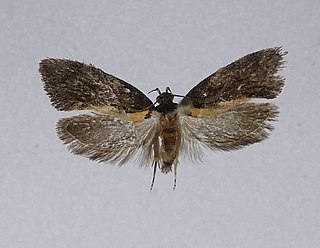
Tingena basella is a species of moth in the family Oecophoridae. It is endemic to New Zealand and has been found in both the North and South Islands. The preferred habitat of this species is scrubland or light forest. Eggs are deposited either singly or in egg masses. The larvae are littler leaf feeders. The adults of this species are on the wing from October through to the middle of December. George Hudson stated that he had collected numerous specimens of both sexes amongst the flowers of Brachyglotis repanda.

Tingena chloritis is a species of moth in the family Oecophoridae. It is endemic to New Zealand and has been found in the South Island. Larvae of this species feed on leaf litter. The adults of this species are light flyers and are attracted to light.

Tingena chrysogramma is a species of moth in the family Oecophoridae. It is endemic to New Zealand and is found in the North and South Islands. The adults of this species inhabits open scrubland and are on the wing in January and February. It has been collected via light traps and beating shrubs. During sunny days this species has been observed resting on leaves and rarely flies. It is regarded as a rare species and has a possible association with Prumnopitys ferruginea.
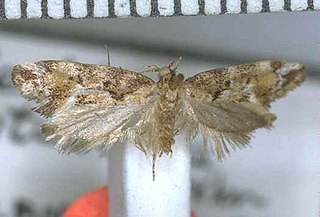
Tingena contextella is a species of moth in the family Oecophoridae. It is endemic to New Zealand and has found in the North and South Islands. The larvae of this species feed on leaf litter.
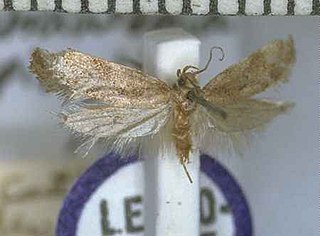
Tingena epimylia is a species of moth in the family Oecophoridae. It is endemic to New Zealand and is found in both the North and the South Islands. This species is similar in appearance to Tingena contextella as it too has a mottled appearance, but T. epimylia can be distinguished as it is smaller in size, slightly narrower wings, and has a more grey appearance and a grey head. This species inhabits native beech forests at altitudes between 1500 and 2000 ft and in particular has an affinity for Nothofagus solandri.

Tingena hoplodesma is a species of moth in the family Oecophoridae. It is endemic to New Zealand and has been found in the North and South Islands. T. hoplodesma prefers native beech forest habitat and adults are on the wing from January to March.
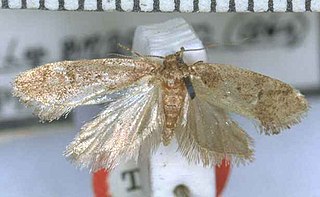
Tingena innotella is a species of moth in the family Oecophoridae. It is endemic to New Zealand and is found in both the North and South Islands. This species inhabits open native forest or scrubland and adults are on the wing from December to March. T. innotella appears to have an affinity for the silver tree fern.
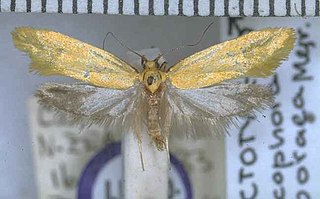
Tingena oporaea is a species of moth in the family Oecophoridae. It is endemic to New Zealand and has been observed in Canterbury. The perferred habitat of this species is native beech forest at altitudes of 2500 ft however it has also been collected in tussock grassland. The larvae of this species are leaf litter feeders and the adults are on the wing in January and February.

Tingena oxyina is a species of moth in the family Oecophoridae. It is endemic to New Zealand and has been observed in the Otago region. This species inhabits native beech forest at altitudes of between 1000 - 3000 ft. Adults of this species are on the wing in January.

Tingena pharmactis is a species of moth in the family Oecophoridae. It is endemic to New Zealand and has been observed in the Nelson, Tasman and Wellington regions. The adults of this species are on the wing in December.
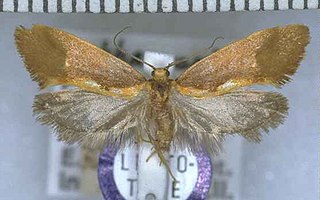
Tingena phegophylla is a species of moth in the family Oecophoridae. It is endemic to New Zealand and has been observed in the southern parts of the South Island. This species inhabits native beech forest. The adults of this species are on the wing in December.

Tingena plagiatella is a species of moth in the family Oecophoridae. It is endemic to New Zealand and has been observed in both the North and South Islands. This species inhabits light native bush or scrubland. Adults of this species are on the wing from November to January.
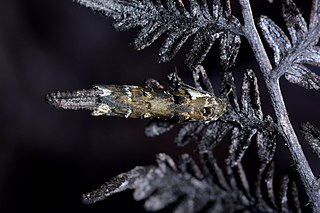
Trachypepla conspicuella is a species of moth in the family Oecophoridae. It is endemic to New Zealand and is found in both the North and South Islands. It is similar in appearance to its close relative T. euryleucota but tends to be paler. Its colouration imitates bird droppings. Larvae feed on leaf litter. Adults of this species are on the wing from November to February and have been observed resting on fences and walls.

Trachypepla contritella, the Kiwi Enigma, is a species of moth in the family Oecophoridae. Originally endemic to New Zealand this species can be found throughout that country. However, from 2012 this species has been also been recorded in the United Kingdom. The preferred habitat of T. conritella is New Zealand native forest and larvae of this species are litter leaf feeders. Adults are on the wing from November to February in New Zealand and are attracted to light.






















